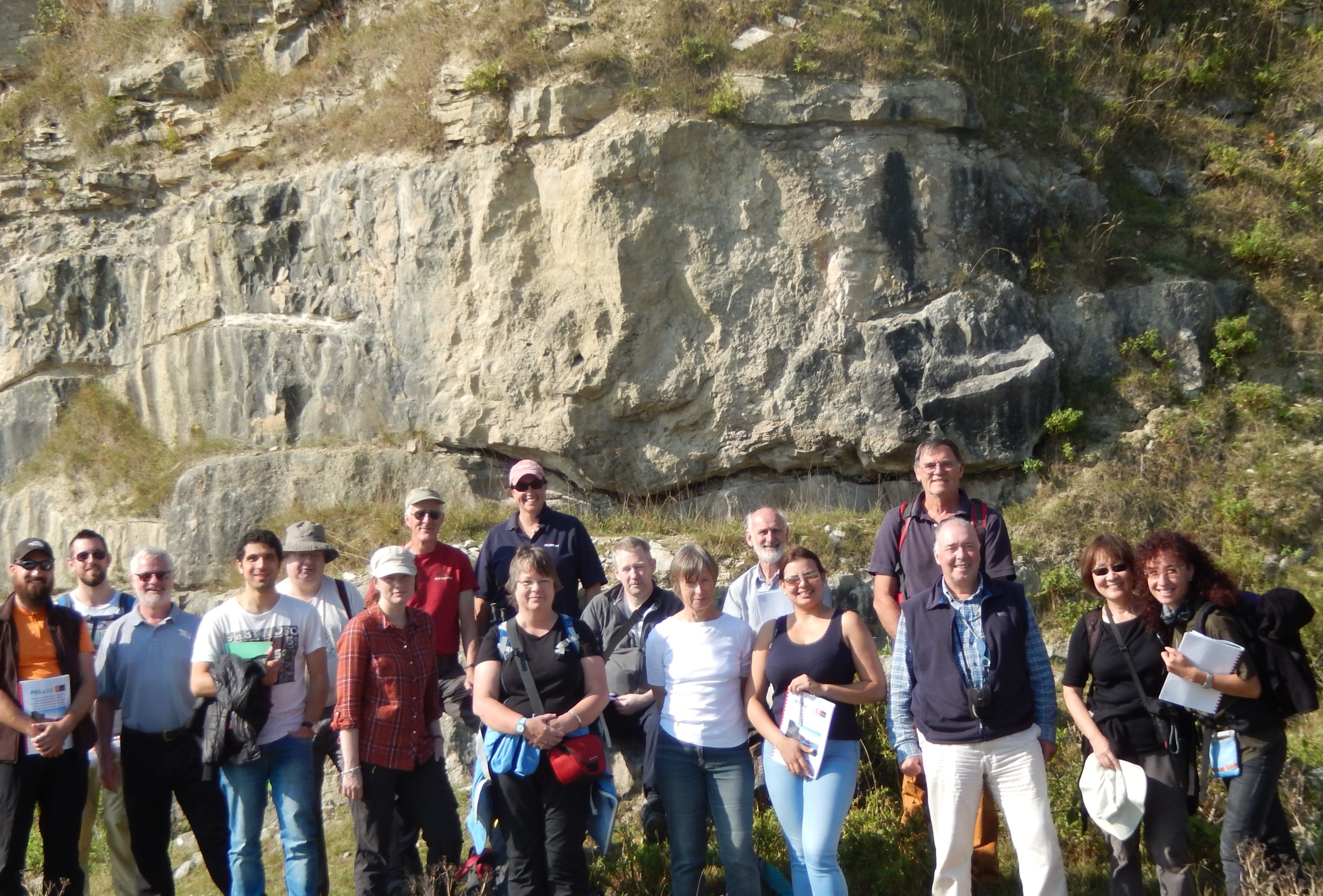REVIEW: Purbeck Lacustrine Limestones Field Trip
Review by Dean Baker, Consultant Geoscientist, RISC Advisory
The Late Jurassic Purbeck carbonates form some of the most iconic outcrop exposures in the UK. The aim of this fieldtrip was to present new work on the Purbeck Group resulting from two 3 year industry funded PhD projects at Royal Holloway University, by Arnaud Gallois and Estanislao Kozlowski, supported by Professor Dan Bosence.
On Saturday morning, fuelled by natural enthusiasm (and a full English breakfast!), under glorious September sunshine, we walked to our first locality, Tout Quarry, Isle of Portland. Dan and Arnaud introduced the stratigraphic succession as we observed the boundary between the marine carbonates of the Portland Limestone Group (Tithonian Age) and the non-marine Purbeck Limestones (Lulworth Formation – Tithonian to Barriasian Age). The Purbeck Limestones, the main focus of the trip, were deposited in a shallow lake on the western margin of the Wessex Basin during the late syn-rift phase of basin evolution.
The remainder of the first day was spent at the iconic Lulworth Cove locality. Here we examined the succession in detail, familiarising ourselves with the informal subdivision of the Mupe Member (Lulworth Formation) into high-frequency lacustrine cycles named Skull Cap, Hard Cap and Soft Cap, each separated by thin, irregularly-bedded paleosols. Of particular interest were the thrombolytic microbial mounds, with their irregular geometries and complex interplay with intraclastic peloidal packstone-grainstone intermound facies.
Discussions centred on the variability in geometry and reservoir quality of mound and intermound facies and the complexity in characterising these features in 3D reservoir models. Also, comparisons were drawn with pre-salt basins offshore Brazil and Angola with similarities recognised in basin size, equivalent syn-rift setting, depositional age and some similarity in facies, particularly the highly porous thrombolytic mounds and less porous intermound facies. It was recognised that further study would be required to assess the suitability of the Purbeck Limestones as analogues for South Atlantic pre-salt.
After a brief lunch stop our next locality was the famous ‘fossil forest’ which shows stunning examples of microbial mound formation around in-situ trees that later decayed leaving ‘doughnut’ shaped microbial mounds preserved.
Our final locality for the day was ‘Bacon Hole’ in Mupe Bay. Here we observed the transition from the upper Lulworth Formation to the overlying (younger) Durlston Formation, representing changes in depositional environment from brackish to hypersaline to freshwater. The restrictive environmental conditions were highlighted by distinctive low diversity mollusc- and gastropod-rich shell-beds. After returning to the Isle of Portland the group reassembled in the evening for a traditional pub meal and cold beverage (or two!).
Day 2 brought more sunshine and at our first locality, Portland Bill, we were able to see close-up the transition between the marine Portland Limestones which are thick-bedded oolitic grainstones containing oyster shells, in contrast to the relatively thin-bedded, microbialite-dominated, lacustrine carbonates of the Lower Purbeck Group.
The last locality at God Nore/Freshwater Bay showed further striking instances of irregular microbial mounds in the lower Purbeck. In addition, we observed more examples of thrombolytic microbial mound formation around in-situ trees. In one example, a concentric arrangement of burrowed peloidal packstone with a thrombolite framework on the upper surface can be observed around a central tree mould.
On behalf of myself and the field group I would like to thank Arnaud and Dan for running an excellent fieldtrip, perfectly mixing humour and expert knowledge to deliver an engaging fieldtrip.
On a personal note, as a sedimentologist and geomodeller by background, one thing that always resonates with me after a field trip is the immeasurable value of seeing rocks in the field; being able to visualise the scale and variability of geology in three dimensions. In my opinion, for this reason alone (in addition to fantastic learning, networking and socialising opportunities), it is well worth making the effort to leave the computer screen behind and get out into the field from time to time.


